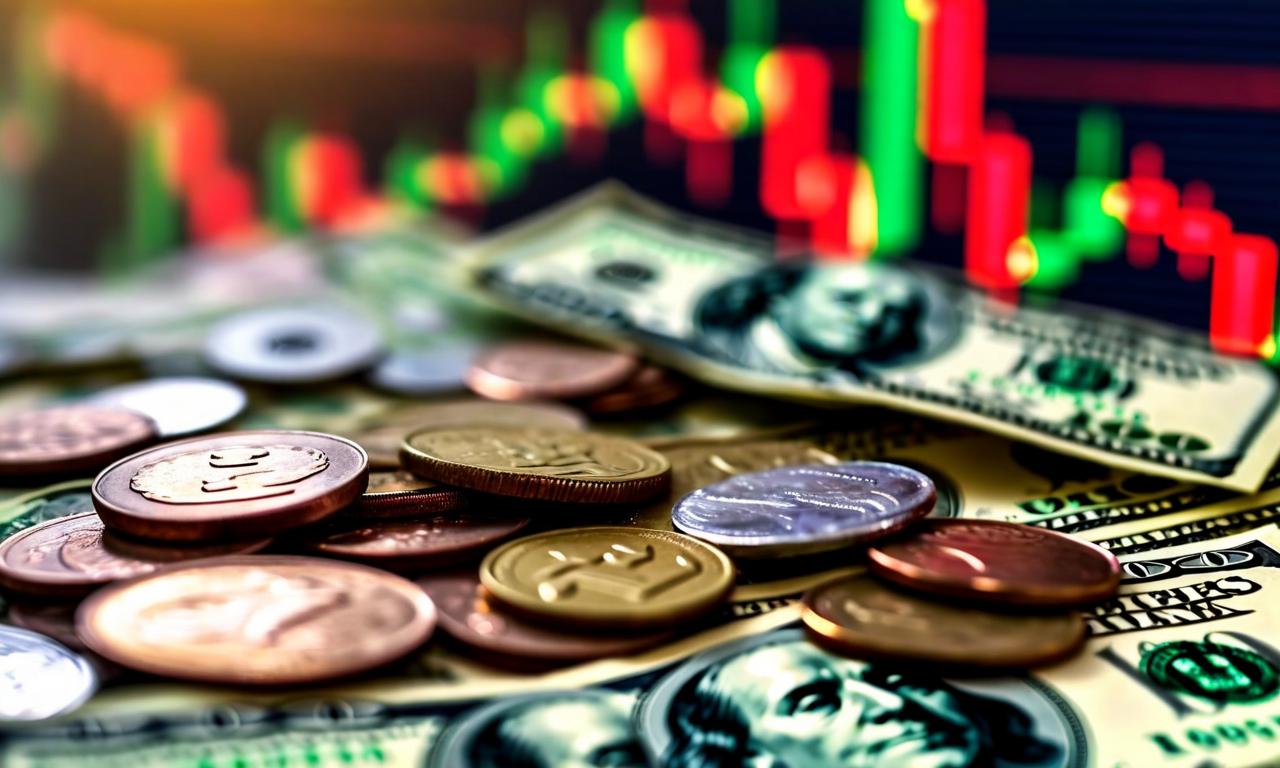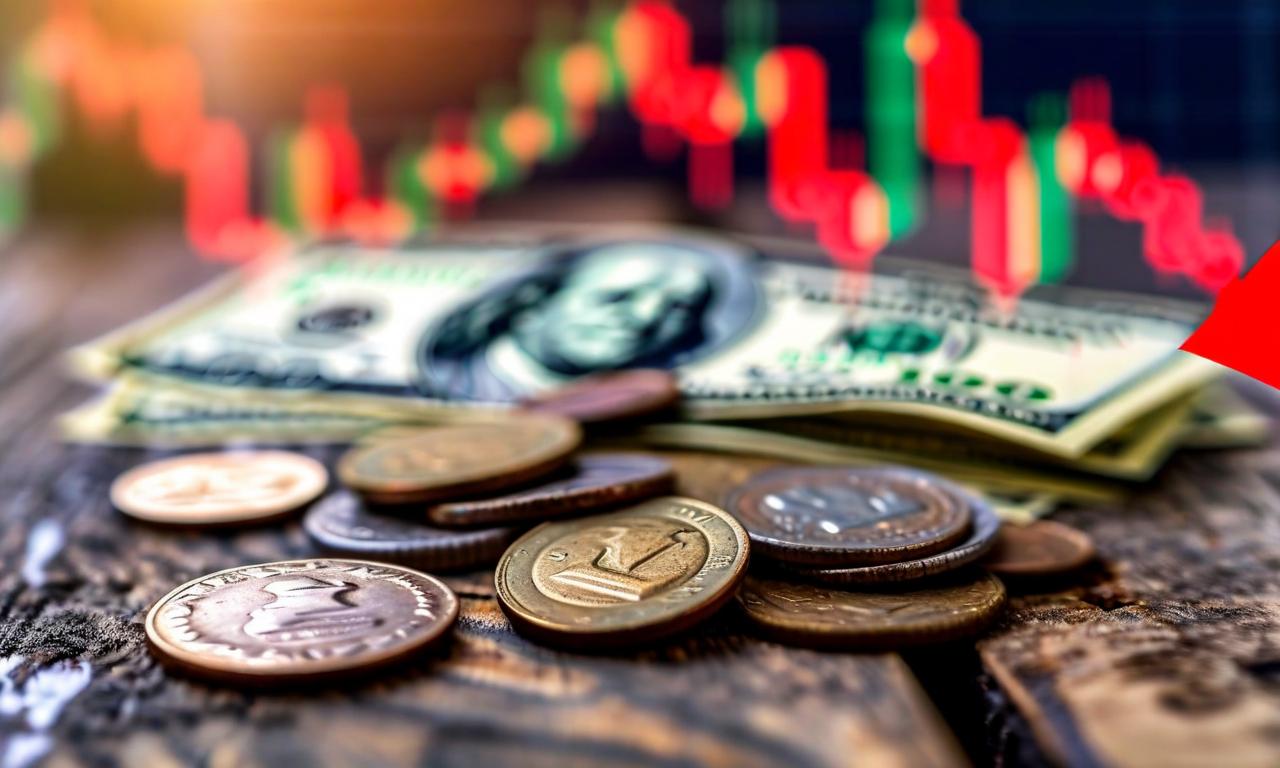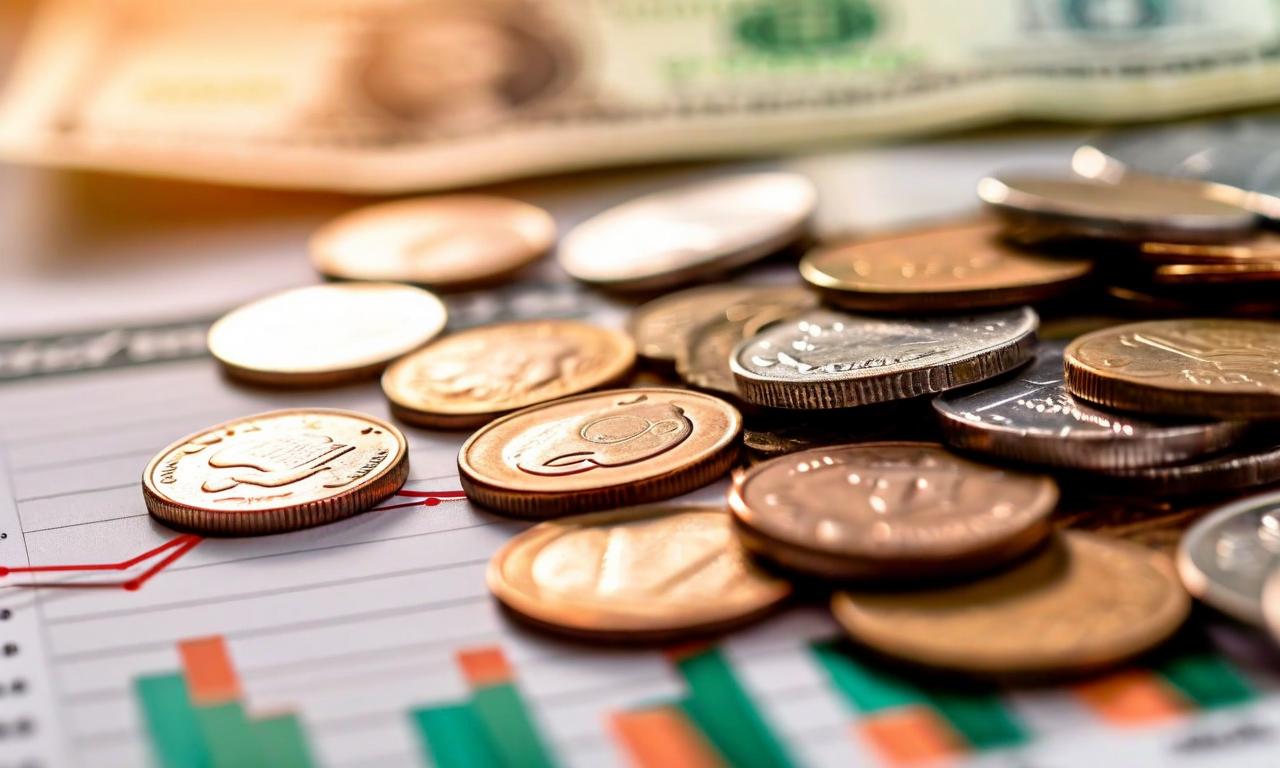Rupee Rebounds After Record Low, Markets Tumble Amid US Tariff Threats
The Indian rupee recovered on Thursday, opening at 87.66 against the US dollar, gaining 14 paise from its previous close. This follows Wednesday's sharp decline where the rupee hit an all-time low of 87.80. The fall was attributed to US President Trump's threat of 25% tariffs on Indian exports and potential penalties for India's Russian oil and arms purchases. The Reserve Bank of India is intervening in the forex market to manage volatility. Indian equity markets reacted with the Sensex dropping 582 points and Nifty declining by 151 points. Foreign investors withdrew ₹850 crore worth of shares. The US Federal Reserve's decision to maintain steady interest rates is also influencing global currency movements.

*this image is generated using AI for illustrative purposes only.
The Indian rupee showed signs of recovery on Thursday, opening at 87.66 against the US dollar, a gain of 14 paise from its previous close. This rebound comes after the currency hit an all-time low on Wednesday, following a series of international pressures and domestic market reactions.
Sharp Decline and Recovery
On Wednesday, the rupee experienced its most significant single-day drop in over three years, plummeting by 89 paise. The currency touched an intraday low of 87.74 before closing at a record weak level of 87.80 against the dollar. The dramatic fall was primarily attributed to US President Donald Trump's threat of imposing 25% tariffs on Indian exports, coupled with potential penalties for India's Russian oil and arms purchases.
Market Intervention and Volatility
The Reserve Bank of India (RBI) appears to be actively intervening in the forex market to manage volatility. This intervention comes at a crucial time as oil companies increase their dollar purchases ahead of the looming Russia penalty deadlines. Despite these efforts, the rupee has seen a decline of over 3% this year, reflecting the ongoing pressures on the Indian currency.
Equity Markets React
The currency's volatility has had a ripple effect on Indian equity markets. The Sensex dropped 582 points, closing at 80,899.37, while the Nifty declined by 151 points to 24,802.45. Adding to the market pressure, foreign investors withdrew ₹850 crore worth of shares on Wednesday, indicating a cautious approach amidst the economic uncertainties.
Global Factors at Play
The US Federal Reserve's recent decision to maintain steady interest rates, coupled with indications that it's not yet ready to cut rates, has added another layer of complexity to the global economic landscape. This stance by the Fed is likely influencing investor sentiments and currency movements worldwide, including the Indian rupee.
Looking Ahead
As the rupee attempts to stabilize, market observers are closely watching several factors:
- The potential impact of US tariffs on Indian exports
- Ongoing geopolitical tensions, particularly regarding India's trade relations with Russia
- The RBI's interventions in the forex market
- Global oil prices and their effect on India's import bill
- Foreign investment flows in and out of Indian markets
The coming days will be crucial in determining whether the rupee can maintain its recovery or if further volatility is on the horizon. Businesses and investors are advised to keep a close eye on these developments as they navigate the current economic landscape.





































